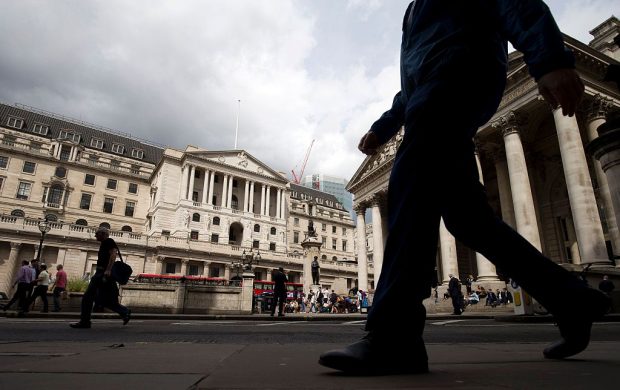As expected, the Bank of England has cut base interest rates down to 0.25 per cent- the first movement since rates were cut to an ’emergency’ low of 0.5 per cent in March 2009. There’s a “clear case for stimulus, and stimulus now” said Mark Carney, BoE governor – so the money printing machine is being put back into action. About £60 billion is to be created electronically, and used to lend money to the government via gilt purchases. It will save Theresa May’s government a fortune: the rate of interest charged on the many loans it takes (ie, gilt yields) collapsed to 0.63pc today; almost half the rate they were a month ago. The bank’s prediction now is that Britain will avoid recession after the Brexit vote (contrary to what George Osborne was suggesting) but with growth halved to 0.8 per cent in 2017 but getting back to where it would othwise have been in 2019. Philip Hammond, the Chancellor, welcomed the move.
‘The vote to leave the EU has created a period of uncertainty, which will be followed by a period of adjustment as the shape of our new relationship with the EU becomes clear and the economy responds to that. It’s right that monetary policy is used to support the economy through this period of adjustment. That’s why I have authorised the Governor’s request for an increase in asset purchases and a new lending scheme to support the economy, helping ensure that the benefit of low interest rates is passed on by the banks to households and businesses. As recent figures on jobs and growth have shown, we enter this period of adjustment from a position of economic strength.’
Carney said the Brexit vote had sparked a ‘regime change’ – but he sounded more optimistic than he allowed himself to during the referendum campaign. The UK can handle change, he said. And he continued his charm offensive by saying Brits are admired the world over for their strength under adversity – although with employment at a record high and inflation at record lows, its is the kind of “adversity” that many on the continent would kill for.
The economic picture is mixed, as the leading article in last week’s Spectator pointed out. In that issue, Liam Halligan also warned against central bankers using Brexit as an excuse to print money and administer another dose of the cheap debt drug. Things are proceeding exactly as he envisaged – the government can now borrow more cheaply but will all of this make much difference to the wider economy? If interests rates were next-to-nothing, how much will it help that they’re even closer to nothing? The Institute of Directirs says 60pc of its members think all of this will make no significant difference to the economy.
The question is what mortgage rates now do: George Osborne’s notorious Brexit dossier envisaged the base rate falling but actual lending rates rising. Like many of his pre-Brexit warnings, this now looks unlikely.







Comments